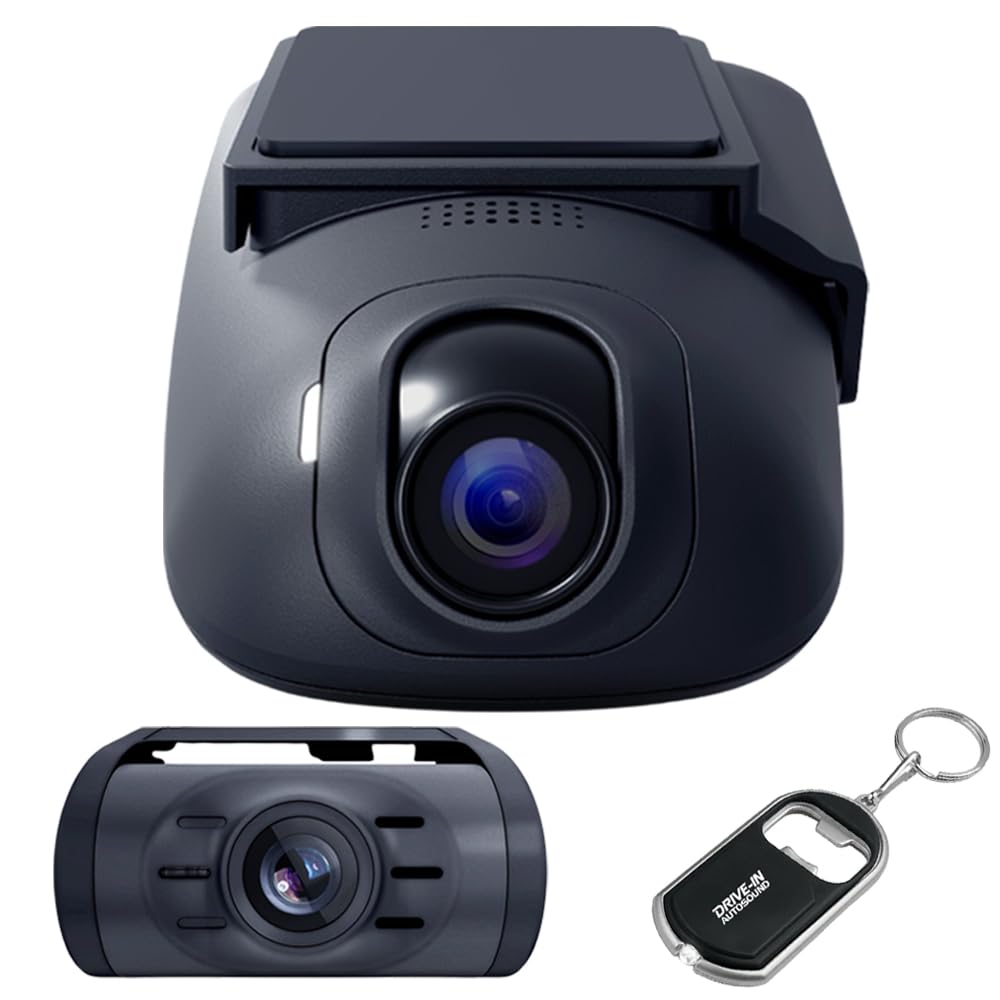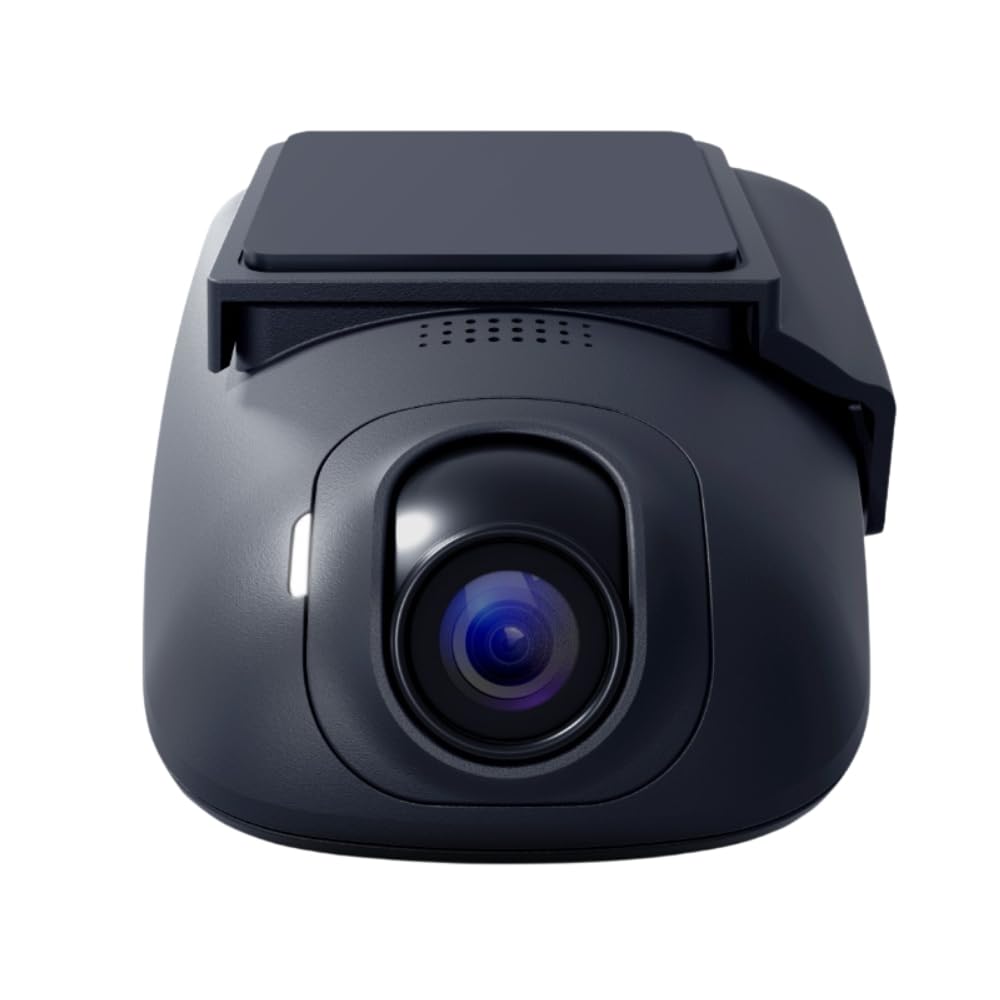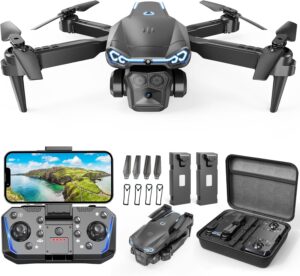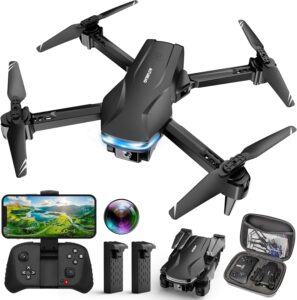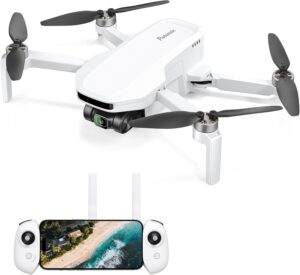What if our car could text us when it gets nervous?
What We Wanted in a Security-Focused Dash Cam
We wanted a camera that doesn’t just watch, but speaks up. We wanted a calm, steady witness for the moments we’re not there, and a bit of theatrical flair for the moments we are. When we leave a car in a grocery store lot or street-park it in a neighborhood that’s having a less-than-stellar week, our stomachs do a little somersault. In our ideal world, the dash cam not only records what happened but tells us, gently and promptly, that something might be happening right now.
The DroneMobile XC-LTE 2K QHD 1440p 30fps Dash Cam with XC-RC1 Rear Camera checks the boxes we care about: a front camera with real detail (1440p at 30fps using the reliable IMX335 sensor), a rear camera so we’re not oblivious to the other half of our car, and a set of security tricks that reads like a checklist from a slightly paranoid detective. It adds dual-stage shock sensing, a glass-break sensor, an on-board siren, and—because silence is not always golden—live streaming over LTE or Wi-Fi with notifications that come through no matter how far away we are.
DroneMobile XC-LTE 2K QHD 1440p 30fps Dash Cam with XC-RC1 Rear Camera - Ideal for Car Security and Surveillance
Meet the DroneMobile XC-LTE 2K QHD 1440p 30fps Dash Cam with XC-RC1 Rear Camera
We’d call this package a dash cam alarm system that happens to shoot 2K video. The headline is the 1440p front camera at 30 frames per second on an IMX335 sensor, which has become a trusted component for clear, balanced images. The supporting cast is equally meaningful: a Full HD rear camera for coverage that finally feels complete, parking modes that keep the system attentive when we’re at brunch, and LTE plus Wi-Fi connectivity that grants us what the company cheerfully calls “unlimited range.”
There’s also the integration with Firstech Systems, which is the ecosystem behind DroneMobile. If you’ve flirted with Firstech gear before, you know it generally means a tighter union between your dash cam and your car’s security functions. That’s a nice way of saying our car starts acting like it has standards.
Key Specifications and What They Mean for Us
We like a good spec sheet, but we love a spec sheet that translates to real life. Here’s what stands out and why it matters to us when the day goes sideways.
| Feature | Spec/Capability | What It Means for Us |
|---|---|---|
| Front camera resolution | 2K QHD 1440p at 30fps | Detail without ballooning file sizes; smooth motion that captures plates and faces under most conditions. |
| Image sensor | Sony IMX335 | A proven sensor for solid dynamic range and low-light performance; fewer “mystery blobs” at night. |
| Rear camera | XC-RC1 Full HD (1080p) | Coverage for tailgaters, rear-end accidents, and parking lot nudges; completes a two-channel record. |
| Connectivity | LTE and Wi-Fi | Live streaming and alerts whether we’re on the couch or on vacation three states away. |
| Security | Dual-stage shock sensor | Differentiates between a bump and a hit; reduces false alarms while still reacting quickly. |
| Security | Glass-break sensor | A specialized sensor tuned to the frequencies of shattering glass; smarter than generic motion alone. |
| Deterrence | On-board alarm siren | An audible “please stop” for people who respond better to sound than ethics. |
| Parking modes | Multiple modes available | Surveillance while the car is off; flexibility for different parking scenarios. |
| Ecosystem | Integrates with Firstech Systems | Plays nicely with compatible Firstech security setups; a unified approach to car safety. |
| Range | “Unlimited” via LTE | Remote access from effectively anywhere with service; our car becomes reachable. |
| Vehicle power | 12v operating voltage | Designed for most passenger vehicles and light trucks; familiar wiring environment. |
If we had to summarize, this is a system built to both watch and intervene. It documents what happens and tries to prevent worse from happening. That combination is what makes it feel like a security product and not just a dash cam with dreams.
Design and Build
We appreciate gear that looks like it belongs in a car rather than sitting on our windshield like a facehugger. The DroneMobile XC-LTE is designed with a restrained aesthetic. Mounted just behind the rear-view mirror, it disappears into our peripheral vision where it belongs. The rear camera, being smaller, tucks up against the rear glass without creating a panorama of adhesive regret.
The build feels purposeful: sturdy without being bulky. The ports are placed with cable management in mind, and the overall footprint allows for a clean install. There’s an engineering humility in a device that doesn’t scream, “Look at me!” while being uncommonly useful in a crisis.
Installation and Setup
We’ve had our share of Sunday projects that started with optimism and finished with new vocabulary. This wasn’t that. The DroneMobile XC-LTE expects a 12v automotive environment and behaves well there. The steps felt sensible:
- Mount the front camera high on the windshield, ideally behind the mirror. We cleaned the glass with more care than we show our kitchen counters, then applied the mount.
- Route the cable for the rear camera along the headliner, down the A-pillar, and along interior trim to the rear glass. It’s the kind of threading that rewards patience and the ability to not tug when tugging feels right.
- Connect power. This system is designed for 12v vehicles, and many installations will use a hardwire kit to ACC, constant, and ground. If we’re integrating with other Firstech hardware, a professional install can make the whole ecosystem sing in harmony.
- Pair with the DroneMobile app. We followed the prompts, authenticated the device, and verified LTE connectivity. LTE-based features typically require a data plan; we recommend checking the current DroneMobile plans before installation day.
- Configure sensitivity thresholds for shock and glass-break detection, test the siren in a way that doesn’t make the neighbors reconsider us, and confirm parking mode behavior.
The most finicky part was running the rear camera cable neatly, which is the price of wanting coverage that doesn’t look like it was installed by a caffeinated raccoon.
The App Experience and LTE Live Streaming
If the hardware is the muscle, the app is the nervous system. We rely on the DroneMobile app to alert us quickly and let us peek in when something feels off. The live streaming works over LTE and Wi-Fi, which means that, as long as our car and our phone have service, we can check what the cameras see in real time. This turns a vague “we think we heard something outside” into “we can see what’s happening outside.”
Notifications arrive when the shock or glass-break sensors trigger, and we can review clips or hop into a live view. The experience feels delightfully modern: our car is suddenly part of the group chat. The app-centric controls also let us tweak sensitivities without climbing into the car with a laptop and a sense of dread.
We’ll add a practical note: LTE streaming uses data. That data typically comes from a DroneMobile plan. We suggest choosing a plan that matches how frequently we intend to check in or stream. Also, there’s a difference between “unlimited range” and “limitless patience.” LTE coverage can vary, and urban canyons or underground parking might reduce signal. When the stars align, though, this remote window into our car’s world is a comfort we didn’t realize we needed.
Parking Modes That Actually Help
Parking mode can be the difference between knowing what went bump in the night and refreshing our ring of friends for alibis. The DroneMobile XC-LTE offers parking modes that keep the cameras and sensors attentive when the engine is off. We can tailor sensitivity so we’re not notified every time a leaf experiences ambition, while still catching genuine incidents.
In practice, the system wakes when motion or a shock is detected, captures evidence, and notifies us. It’s reassuring to see a clip and identify “neighbor’s cat auditioning for a heist movie” rather than “someone testing our window with a rock.” With the glass-break sensor on board, the system is tuned to the specific frequencies of shattered glass, which adds a layer of detection that generic motion sensors can’t match.
Security Features That Make It More Than a Dash Cam
This is where the product feels like a car guardian rather than a passive recorder. The dual-stage shock sensor distinguishes between minor vibrations (someone bumping the car with a shopping cart) and major impacts (someone backing into us with the commitment of a soap opera reveal). We get alerted appropriately, and the sensitivity is adjustable so we can match it to our environment.
The glass-break sensor adds specialized awareness, listening for the acoustic signature of a window shattering. That means fewer false alarms from a dropped bottle and faster reactions to actual break-in attempts. And then there’s the on-board alarm siren, which performs two jobs: it deters the casual tamperer and draws attention when attention is needed. It’s the audio equivalent of a stern, well-timed throat clearing.
Integration with Firstech Systems means the camera can be part of a broader security scene if we’re also using compatible gear. We like that the system behaves like an ensemble, not a collection of soloists. If someone tampers with the car, the camera records, alerts us, and the siren speaks up. It’s a choreography that favors us.
Image Quality: Day and Night
We’re living in a time when 4K numbers are tossed around like confetti, so 2K QHD might sound modest until we look at the footage. At 1440p with the IMX335 sensor, the DroneMobile XC-LTE delivers clarity and dynamic range that make a meaningful difference. In daylight, the 30fps recording keeps motion clean—no jittery license plates or smeared details when a situation unfolds over three seconds in a merge lane that should have been a friendship test.
At night, the IMX335’s reputation for low-light competence keeps headlights from turning into blinding halos and keeps side-lit scenes legible. Streetlights are balanced. Faces aren’t ghostly abstractions. We appreciate that the footage remains useful even in mixed lighting, where the camera has to juggle the glare of a wet road and the deep shadows of a parked SUV. The aim here is not cinematography; it’s evidence that holds up.
Rear Camera Perspective
No matter how vigilant we are, we don’t have eyes in the back of our head—until we do. The XC-RC1 rear camera records in Full HD, which is the difference between wondering what hit us and seeing who did it. For tailgating incidents, fender benders, or the special chaos of parallel parking, the rear channel turns a narrow narrative into a full story.
We mounted the rear camera high on the glass for a stable, unobstructed view. The footage syncs with the front camera, and we can pull paired clips that show both perspectives. It’s not just satisfying; it’s useful when a claim depends on piecing together how a moment unfolded.
On the Road: Daily Use
We care about how a dash cam behaves when we’re not thinking about it—because most days we’re thinking about the coffee we forgot at home. In daily driving, the DroneMobile XC-LTE starts with the car and records without fuss. It doesn’t fill our cabin with lights or beeps. We get a quiet assurance that, if something happens, we’ll have a record of it.
We appreciate that LTE connectivity doesn’t demand our attention; it’s there when we need it. When the car is parked, the camera’s parking mode and sensors keep watch. We’re not forced into choosing between surveillance and battery life, either; with sensible sensitivity settings and proper installation, the system behaves like a considerate guest—present, attentive, and not raiding the fridge.
Storage, Clips, and Evidence
Dash cams are only as good as the footage they preserve. In practice, systems like this record to a memory card and loop over the oldest footage when space runs out. Important clips are typically locked to prevent overwrites. We used a high-endurance microSD card, which is the standard recommendation for dash cams because of the constant write cycles. We also set aside time every month to check the card’s health. It’s not glamorous, but neither is realizing a card failed before our big moment.
With LTE on board, we can remotely view live video and, in many setups, review and manage clips through the app. If cloud storage is available for your plan, that creates an additional safety net for the crucial few minutes we care about most. We like redundancy in our life—it’s why we keep spare house keys and a backup carton of ice cream.
Power Management and Vehicle Compatibility
The DroneMobile XC-LTE is designed for a 12v electrical system, which covers most cars, crossovers, SUVs, and light trucks. That makes compatibility straightforward. The finer point is how we power parking mode while protecting our battery. A proper hardwire install often includes a power management module or settings that cut off recording at a specific voltage threshold. We recommend enabling low-voltage protection if available and setting realistic parking mode durations based on how often we drive and how long we typically park.
For daily comings and goings, we didn’t notice any unusual battery drain. If we plan to leave the car parked for extended periods, we match the sensitivity settings to reality and consider reducing features that may churn away when we’re not around. Balance is the name of the game: vigilant, not vampiric.
Privacy and Data
We like cameras until they feel like they’re turning into roommates. With LTE and remote access come questions about privacy. We locked down our app with a strong password and enabled any available authentication features. We also took a few minutes to review data-sharing settings and understand what is stored on the device versus in the cloud. Responsible paranoia is a virtue with connected devices.
Finally, we checked local laws about audio recording. Some regions require consent to record audio, so we adjusted our settings accordingly. It’s better to be informed than to be informed by a politely stern letter.
How It Compares
Against a basic, non-connected dash cam, the DroneMobile XC-LTE feels like a leap. The security suite—dual-stage shock sensing, glass-break detection, and the on-board siren—pushes it from “it records accidents” to “it changes outcomes.” The LTE live streaming with notifications adds a layer of immediacy we didn’t realize we wanted until we had it. “Unlimited range” isn’t a gimmick; it’s a mindset shift. We stop wondering and start checking.
Against a higher-resolution 4K dash cam with no connectivity, we trade some pixel count for a complete security package and remote access. We’ll happily make that trade. The 2K QHD footage is already excellent, and the IMX335 sensor is a quiet workhorse we’ve come to trust.
Compared to a standalone car alarm, this system brings receipts. It doesn’t just shout; it records and messages us with context. That combination—deterrence plus documentation—is compelling. We like that our car doesn’t just sound upset; it shows us why.
What We Loved
- Comprehensive security suite. Dual-stage shock sensing, glass-break detection, and the on-board siren give us protection that feels proactive rather than passive.
- LTE and Wi-Fi connectivity with live streaming. “Unlimited range” access means we can verify, not just wonder.
- Solid 2K QHD video with the IMX335 sensor. Day and night, the footage holds up where it counts.
- Included Full HD rear camera. A rear channel is essential for full coverage, and it’s built into the package.
- Integration with Firstech Systems. If we’re already in that ecosystem, this dash cam becomes the natural center of our car’s security universe.
- Parking modes that are actually useful. Evidence when we’re away, without constant battery anxiety.
- Friendly app experience. Notifications are quick; controls are where we expect them.
What Gave Us Pause
- LTE requires a data plan. It’s worth it for the features, but it’s a recurring cost to budget for.
- 30fps at 1440p. We’re happy with the quality, but some of us will pine for 60fps for fast action.
- Installation complexity. A clean two-channel install with power management is not a five-minute job; professional installation is a good idea.
- Siren etiquette. We love deterrence; our neighbors love sleep. Calibrating sensitivity is important to avoid false alarms.
- Storage housekeeping. Like any dash cam, memory cards need occasional maintenance or replacement. It’s the dental floss of car ownership.
Tips for Getting the Best Out of It
- Use a high-endurance microSD card from a reputable brand and replace it proactively based on usage.
- Start with moderate sensor sensitivity; adjust after a week of real-world parking to reduce false alerts.
- Enable any available voltage cutoff for parking mode to protect your battery if your install supports it.
- Mount the front camera high and centered behind the rear-view mirror; keep the lens area clear of fritted glass patterns.
- Clean both lenses monthly with a microfiber cloth; a dirty lens is like watching life through a potato.
- Consider professional installation if integrating with other Firstech hardware; the ecosystem behaves best when it’s wired thoughtfully.
- Audit your notification settings. We prefer critical alerts on, minor alerts summarized.
- Review local laws about audio recording and camera placement. A few minutes of homework can save a headache later.
Who Should Buy This
- City parkers who leave their car curbside and want real security, not just passive recording.
- Commuters who want reliable evidence for insurance or accountability when the road becomes a soap opera.
- Rideshare and delivery drivers who benefit from remote check-ins and a rear channel that watches the second half of the story.
- Anyone already using Firstech Systems gear and wanting a connected dash cam that ties the whole security puzzle together.
- Owners in high-theft or high-vandalism areas who want an on-board siren and specialized glass-break detection to deter crime and document attempts.
Everyday Scenarios Where It Shines
- Street parking overnight. The camera’s parking mode and glass-break sensor keep a calm vigil. If someone tests our window, we get a notification and an audible deterrent.
- The mystery of the door ding. The shock sensor triggers, we pull the clip, and the culprit is caught, sometimes spectacularly trying to pretend the scratch was a gift from the wind.
- The rear-end tap and run. The rear camera captures the plate, the front camera grabs the wider scene, and we assemble a clip that makes our insurance claim feel less like a confession and more like a report.
- The “is my car safe right now?” anxiety. We open the app, check a live view, and stop imagining elaborate heists orchestrated by raccoons with PhDs.
- The parking garage test. Doors slam, carts roll, and the system balances vigilance with discretion when we’ve dialed in sensitivity.
Things We Didn’t Miss
- Over-the-top, needlessly complicated menus. The app keeps critical settings accessible without making us wade through obscure toggles labeled like secret society rituals.
- Distracting design. We didn’t want a gadget that looks like a small satellite clinging to our windshield. The XC-LTE blends in and gets on with its job.
Troubleshooting Notes We Learned the Polite Way
- If live streaming feels sluggish, check LTE signal strength in the car’s usual parking spot. Garages and basements can turn anything into a hermit.
- If the siren triggers too often, drop the sensitivity one notch and reassess after a couple of days. It’s a little like seasoning—easier to add than to take away.
- If the rear camera footage looks fuzzy, double-check that the glass is clean inside and out. We discovered the second layer of grime hiding like a plot twist.
- If storage clips overwrite too quickly, consider a higher-capacity card and lock important clips in the app right away.
Frequently Asked Questions
Does LTE mean we need a subscription?
Yes, LTE features typically require a DroneMobile data plan. Plan options vary, so we suggest checking current offerings and choosing based on how often we plan to stream or review clips remotely.
What does “unlimited range” really mean?
It means we can access the camera from essentially anywhere our phone and the dash cam both have network connectivity. It’s not bound by Bluetooth distance or Wi-Fi range. In rural dead zones, performance depends on LTE coverage.
Will it drain our battery in parking mode?
Parking mode draws power, but a correct installation with appropriate low-voltage protection and sensible settings helps safeguard the battery. If you leave the car parked for extended periods, consider adjusting parking mode durations or sensitivity.
Can we disable the siren?
Yes, siren behavior is configurable. We can disable it or adjust settings to reduce false triggers. If we live in a sensitive noise environment, we can rely on silent alerts and recordings while still keeping deterrence available when needed.
How good is the image at night?
The 2K QHD front camera uses the IMX335 sensor, which has a strong reputation for low-light performance. It captures balanced footage with useful detail and fewer headlight blowouts than older sensors.
Is the rear camera included?
Yes. The XC-RC1 rear camera is included and records in Full HD. We consider it essential for complete coverage.
Does it integrate with other Firstech Systems products?
Yes, it’s designed to integrate within the Firstech Systems ecosystem. If we have compatible Firstech gear, this dash cam can complement and enhance overall vehicle security.
Do we need professional installation?
Not strictly, but we recommend it—especially if we’re integrating with other Firstech gear or want clean cable routing, power management, and properly configured parking modes.
Where are videos stored?
Clips are typically stored on a memory card in the device. Live streaming and remote access are handled via LTE/Wi-Fi. Depending on plan features, some cloud functionality may be available; check the current DroneMobile offerings for specifics.
Will the system work in all vehicles?
It’s designed for 12v automotive systems, which covers most passenger vehicles and light trucks. Specialty vehicles with different electrical systems may require additional hardware.
Real-World Impressions After Weeks of Use
After the initial novelty of checking in on our car wore off, we settled into a rhythm. We liked that the presence of the siren and sensors reduced our background anxiety. When we parked in a new neighborhood, the system felt like a quiet companion rather than a burden. There was a particular afternoon when a delivery truck got intimately close to our bumper; the shock alert pinged, the fronts and rears captured the moment, and our day went from “what was that?” to “we have the clip” in under a minute.
Our favorite small joy is the immediacy of LTE. We can confirm that the car is fine without walking three blocks back in the rain like an anxious parent who forgot their toddler at the picnic. It’s a little superpower we didn’t know we needed until we used it twice in a week.
The Balance of Quality and Practicality
We’re often tempted by the shiniest numbers—4K, 60fps, twelve magic acronyms—but the DroneMobile XC-LTE makes a case for thoughtful balance. The 2K QHD resolution and IMX335 sensor deliver the visual quality we need. The security features add protection we can feel. LTE brings access we can rely on. We’d happily live with these choices rather than chase extra pixels at the expense of the features we actually use every day.
And then there’s the on-board siren. It’s the asterisk we didn’t know we needed, the “by the way” that changes outcomes. Not every bump needs a theatrical reaction, but when someone tries to make a quiet mess of our window, a little theater is exactly what we want.
Responsible Use and Etiquette
We love security, but we also enjoy being invited to neighborhood potlucks. A few unwritten rules make life smoother:
- Calibrate sensitivity thoughtfully. Start conservative; increase as needed.
- Place the camera so it doesn’t obstruct the driver’s view.
- Respect privacy when sharing clips. Blur faces and plates when appropriate.
- Keep the lenses clean so you don’t share your latest “evidence” only to realize you filmed a smudge at 1440p.
These small gestures keep us on good terms with both our neighbors and our future selves.
Our Value Take
When we add up what we’re getting—front and rear cameras, 2K QHD quality with a known-good sensor, LTE live streaming and notifications, meaningful security sensors, and an on-board siren—the package lands squarely in the “worth it” column for anyone who treats their car like a valued companion. The recurring cost of LTE is real, but so is the value of knowing what’s happening right now rather than discovering it later with a sigh and a broom.
We see this not as an impulse buy but as an upgrade to our sense of calm. It pays off the first time it turns a mystery into a solvable problem.
The Shortlist, If You’re Skimming
- This is a two-channel, 2K-front/Full HD-rear dash cam with serious security chops.
- It connects over LTE and Wi-Fi for live streaming and alerts from virtually anywhere.
- It includes dual-stage shock sensing, a glass-break sensor, and an on-board siren for real deterrence.
- It lives in the Firstech Systems ecosystem, making it a smart choice if we’re already using compatible gear.
- It runs on 12v, making it a match for most cars and light trucks.
- It asks for a data plan for LTE features and rewards us with peace of mind and quick access.
Our Verdict
We think the DroneMobile XC-LTE 2K QHD 1440p 30fps Dash Cam with XC-RC1 Rear Camera makes a persuasive case for what a modern automotive security camera should be. It’s not just recording for later; it’s participating in our car’s safety in the moment. The 2K front footage and Full HD rear channel give us the evidence we need, and the LTE connectivity makes our car feel like part of our connected life rather than a separate, slightly moody entity out on the curb.
The dual-stage shock sensor and glass-break detection are the grown-ups in the room—measured, specific, and tuned for what actually matters. The on-board siren is the voice that speaks up when courtesy fails. Together, they turn a dash cam into something better: a security system that watches, warns, and records.
If we want a camera that goes beyond “we’ll see what happened later” and into “we know what’s happening right now,” this is the one we’d put behind our rear-view mirror and not think about until it’s time to be impressed.
Disclosure: As an Amazon Associate, I earn from qualifying purchases.
